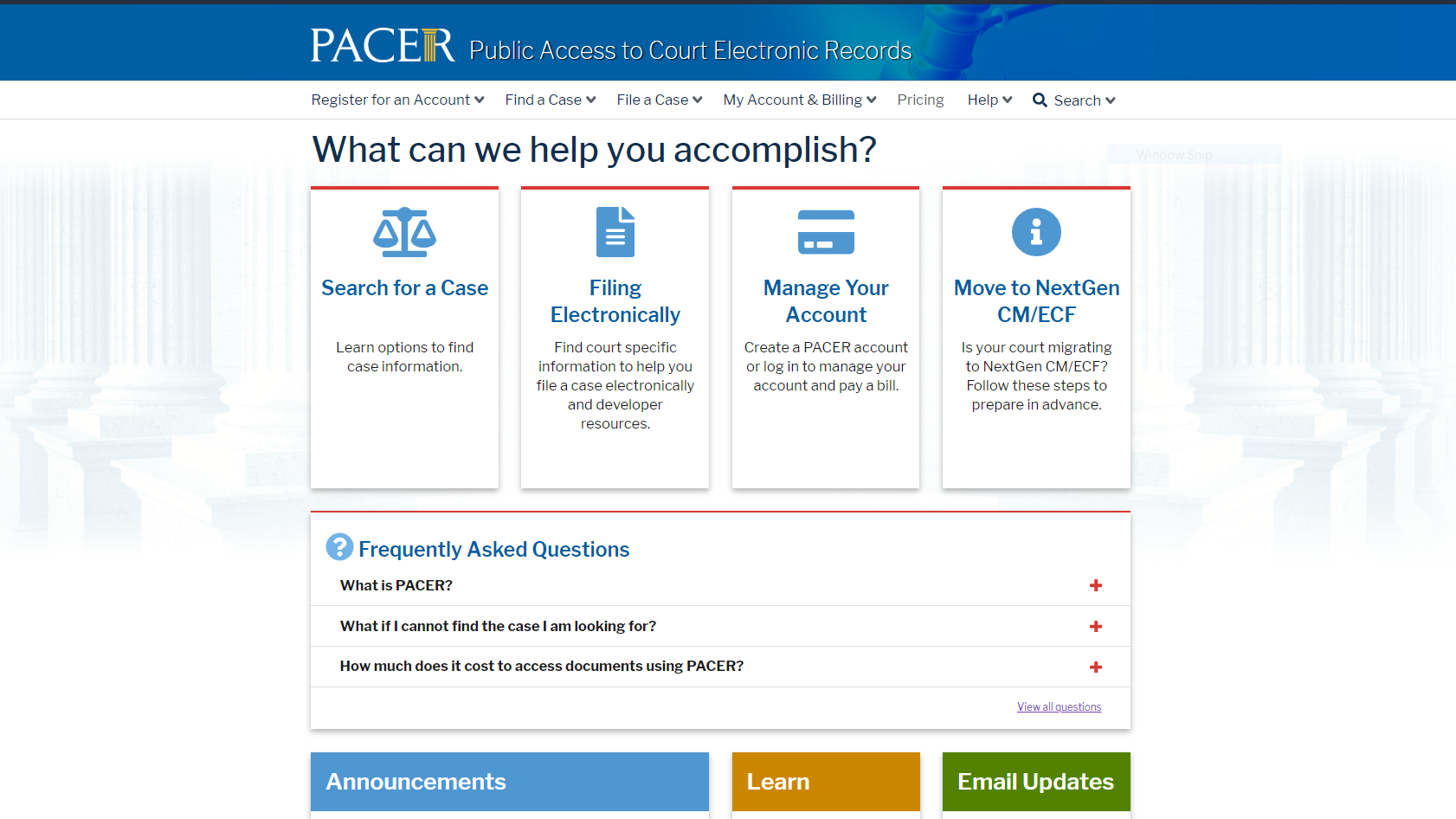A new design rolled out yesterday for the website of the U.S. Courts Public Access to Court Electronic Records (PACER) program, the site’s first major update in a decade.
The site, which can be found at pacer.uscourts.gov, provides information about the PACER service and is the portal to PACER applications. It is run by the Administrative Office (AO) of the U.S. Courts.
[Editor’s note 6/30/20: As there has been some confusion about this, let me make clear that the update is only to the program’s informational website and is not an update of the core PACER platform used to search and retrieve federal court docket records.]
The AO said that it undertook the upgrade in response to feedback from users and as part of the judiciary’s ongoing effort to improve public access. The updated website also will allow the AO to collect additional analytical data to inform future enhancements, it said.
The new site includes features designed to make it easier for users to learn how to navigate the system, find what they are looking for more quickly, and better understand the fee structure for downloading records. The update also improves accessibility for people with disabilities.
Among the new features of the site:
- More modern navigation tools with graphical aids.
- Simplified instructions for registering for a PACER account.
- Mobile-friendly design for use with hand-held devices.
- Simplified directions for searching for specific records either system-wide or by specific courts.
- Instruction on how to obtain judicial opinions through govinfo.gov, the website for the U.S. Government Publishing Office.
- Simplified presentation of information about PACER pricing.
- A page that outlines fee exemptions for researchers.
- New accessibility tools for people with disabilities that allow them to, for example, adjust text size and contrast elements or access documents through a screen reader.
The redesign includes a new tool for searching for court-specific information. Search for a court by name or type and retrieve information about its physical locations and contact information as well as information about electronic case management and filing (CM/ECF) in that court.
 Robert Ambrogi Blog
Robert Ambrogi Blog